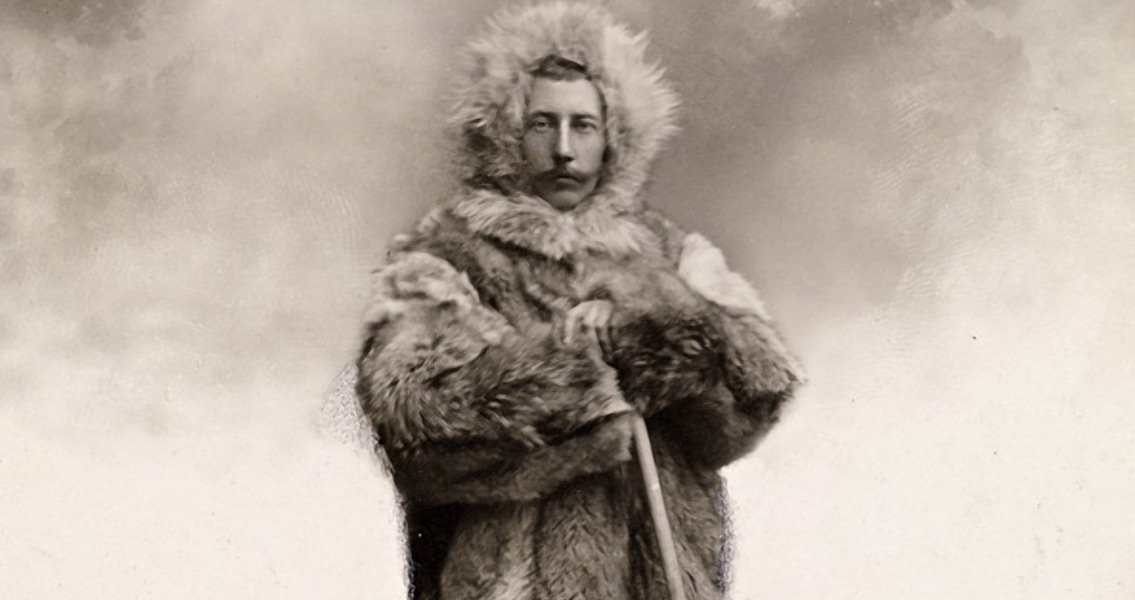<![CDATA[On 14th December 1911, Roald Engebreth Gravning Amundsen won exploration's last great prize, leading the first expedition to the South Pole. In one of the most exciting and tragic races of the twentieth century, Amundsen beat his British rival Robert Falcon Scott's expedition to the landmark by over a month, Scott not arriving until 18th January 1912. Blighted by misfortune and adverse conditions from the start, Scott would never make it home. Whereas Amundsen had relied on sleigh dogs to transport his team to the Pole, Scott instead employed Siberian moter sledges and ponies alongside dogs. From the start it had become apparent the ponies were not well suited to walking through the snow and ice. As they weakened, Scott and his men killed them, using their meat as extra food rations. All of the motor sledges used by Scott's men succumbed to mechanical failure, meaning that when the last of the dog parties were turned back to base camp as planned, Scott and his men were left to drag their own supplies through the snow. When Scott's team headed back from the Pole, the weather took a drastic turn for the worse. Two members of the team died on the journey back, before Scott and the final two survivors of his expedition were trapped in a storm just eleven miles from their base camp. Their frozen bodies were found later in 1912. Such issues did not blight Amundsen's team. The dogs were much better at working through the snow, meaning the team were able to progress swiftly and with comparatively little drama over the Axel Heiberg glacier and through the polar plateau. At 3pm on the 14th (or 15th, dates vary based on interpretations of the international date line) the team stopped at the South Pole. A Norwegian flag was planted, and Amundsen made a succinct diary entry. "So we arrived and were able to plant our flag at the geographical South Pole. God be thanked!" Amundsen's achievement capped a frenzy of exploration in the Antarctic region which had started in the late nineteenth century. The last unexplored continent on earth, the first people to set foot there were likely whale and seal hunters looking for new prey. The major powers of Europe, such as Britain, France, Belgium, Germany and Norway, pushed by their traditional rivalries, soon started to send expeditions to the continent in a race to uncover uncharted new territory, learn more about the unfamiliar landscape and gain access to any uncharted resources hidden there. Amundsen decided to launch the South Pole mission after learning of Ernest Shackleton's failed attempt to reach the landmark. He set about finding out as much as he could about the earlier expedition, and soon started planning his own attempt. By August 1911 he was ready to set off, having abandoned plans of reaching the North Pole following Robert Peary and Frederick Cook's success. Born in Oslo in 1872, Amundsen's victory in the race to the South Pole was just the crowning achievement in a life defined by exploration and adventure. Sometimes referred to as the 'Last of the Vikings' due to his Scandinavian roots, impressive stature (he was over six feet tall) and his passion for exploration, in 1903 he had become the first person to lead an expedition through the Northwest Passage. Fifteen years after the successful expedition to the South Pole, he became the first person to fly a plane over the North. As much as anything else, Amundsen's triumphs are often attributed to the meticulous detail with which he planned and researched his expeditions, an observation which with hindsight could be seen as contributing to his success when Scott was struck by tragedy. ]]>
Amundsen Wins the Race to the South Pole
